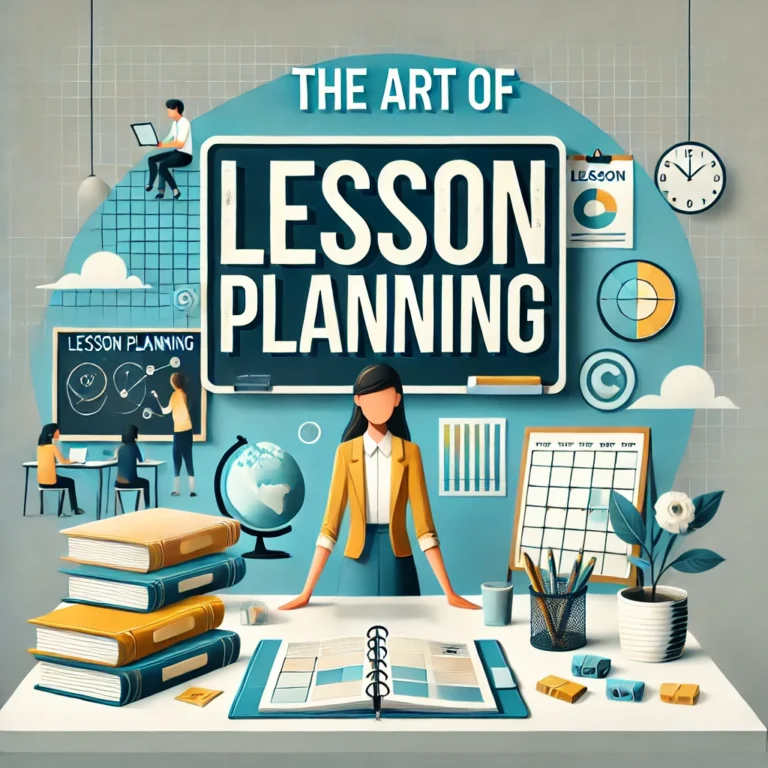Lesson planning is one of the most critical components of teaching. A well-structured plan not only helps students reach their learning objectives but also makes classroom management smoother and keeps students engaged throughout the lesson. Whether you’re a new teacher or a seasoned veteran, there are always ways to refine your lesson planning to make it more impactful and adaptable to every student’s needs.
1. Start with Clear Learning Objectives
Before diving into the details of your lesson, it’s essential to define what you want your students to learn by the end of the class. Clear learning objectives help you stay focused on what’s important and make it easier to assess student progress. Objectives should be specific, measurable, and aligned with your curriculum.
Tip: Use action verbs like “analyze,” “create,” “compare,” or “explain” in your objectives to make them more precise. For example, instead of “Understand photosynthesis,” say “Explain the process of photosynthesis and its role in plant life.”
2. Know Your Students
Effective lesson planning requires you to take into account the diverse needs of your students. Consider their learning styles, backgrounds, and skill levels as you design your lessons. Differentiation is key—some students may need more support, while others might be ready for more challenging material.
Tip: Use pre-assessment tools or informal quizzes to gauge what your students already know before starting a new topic. This will help you tailor your lessons to their current level.
3. Create a Flexible Structure
A lesson plan should have a clear structure that allows for flexibility. Break your lesson into manageable chunks: introduction, main activity, and conclusion. The introduction sets the tone, the main activity engages students with the content, and the conclusion reinforces what was learned.
Tip: Build in a little extra time for unexpected events, like students needing more clarification on a concept or technical difficulties with digital tools.
4. Incorporate a Variety of Activities
One of the most effective ways to keep students engaged is by using a mix of instructional methods and activities. Lectures, group work, hands-on activities, and multimedia resources all have their place in a well-rounded lesson. Varying your approach not only keeps students interested but also caters to different learning styles.
Tip: Use technology tools, such as interactive whiteboards or learning apps, to enhance traditional teaching methods. For example, using an app to create polls or quizzes during a lesson can increase engagement.
5. Plan for Student Participation
Active learning is more effective than passive listening. When planning your lessons, think of ways to get students involved, whether through discussion, problem-solving, or collaboration. Encourage students to ask questions and offer their perspectives.
Tip: Try using think-pair-share activities where students first think individually about a question, then discuss it with a partner, and finally share their insights with the class. This allows all students to contribute without feeling put on the spot.
6. Anticipate Challenges
No matter how well you plan, unexpected challenges can arise during a lesson. Whether it’s students struggling with a concept or technical issues, it’s essential to have backup plans. Having alternative activities or questions ready can save your lesson from going off-track.
Tip: Prepare extension activities for students who finish early, and provide additional support for those who may need more time with the material. This ensures that all students remain engaged.
7. Reflect and Revise
After each lesson, take time to reflect on what went well and what could be improved. Did the students achieve the learning objectives? Were they engaged? Were there any unexpected challenges? Reflecting on your lesson allows you to revise and improve future plans.
Tip: Keep a journal or use lesson planning software to track your reflections and revisions. Over time, you’ll develop a bank of lessons that are tailored to your students’ needs and your teaching style.
Final Thoughts Crafting engaging and effective lesson plans takes practice and reflection. By setting clear objectives, incorporating diverse activities, and remaining flexible, you can create lessons that meet the needs of all your students. Remember, a great lesson plan doesn’t just guide you—it creates an environment where students are motivated, challenged, and supported to reach their full potential.


